Abstract
Three males in a large family showed a selective deficiency of properdin (P). One of the P deficient individuals died from a fulminant infection with Neisseria meningitidis group C. The family history revealed three previous cases of similar infections with a fatal outcome. The deficiency did not appear to be associated with repeated bacterial infections. The pattern of inheritance suggested an X-linked mode of transmittance. However, heterozygous carriers were not clearly distinguished in the family. P deficient serum supported immune haemolysis in a normal fashion. Alternative pathway functions, such as the activation of C3 by inulin or zymosan, lysis of guinea-pig erythrocytes in agarose gel and opsonization of endotoxin coated oil particles, were grossly impaired in P deficient serum while efficient C3 activation was produced by addition of cobra venom factor.
Full text
PDF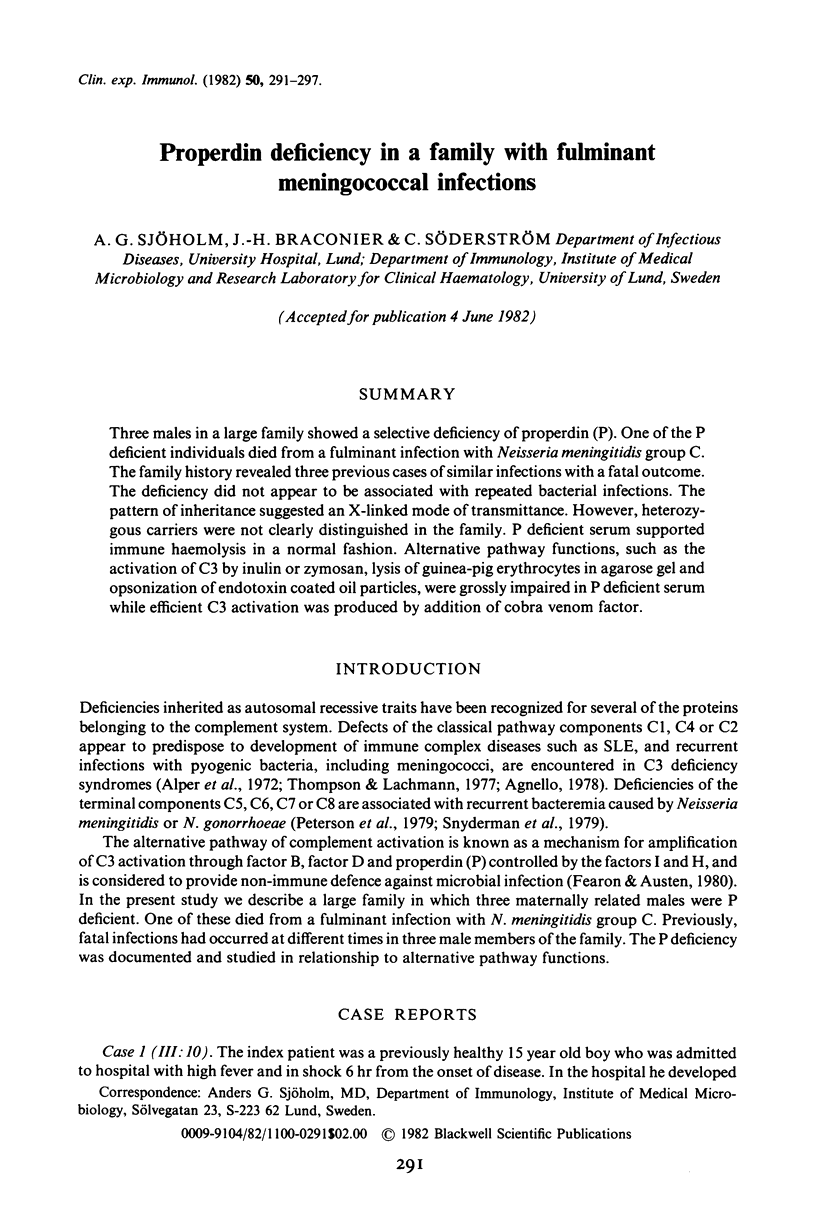
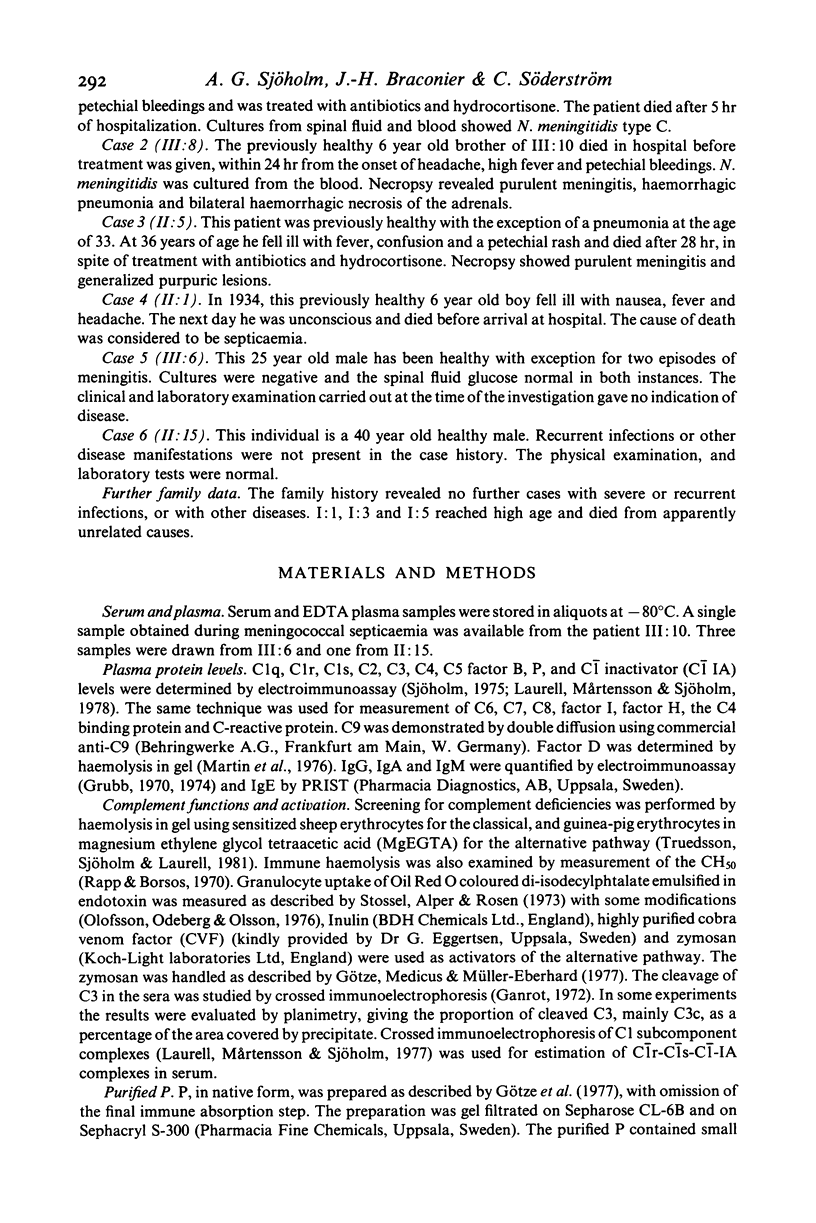
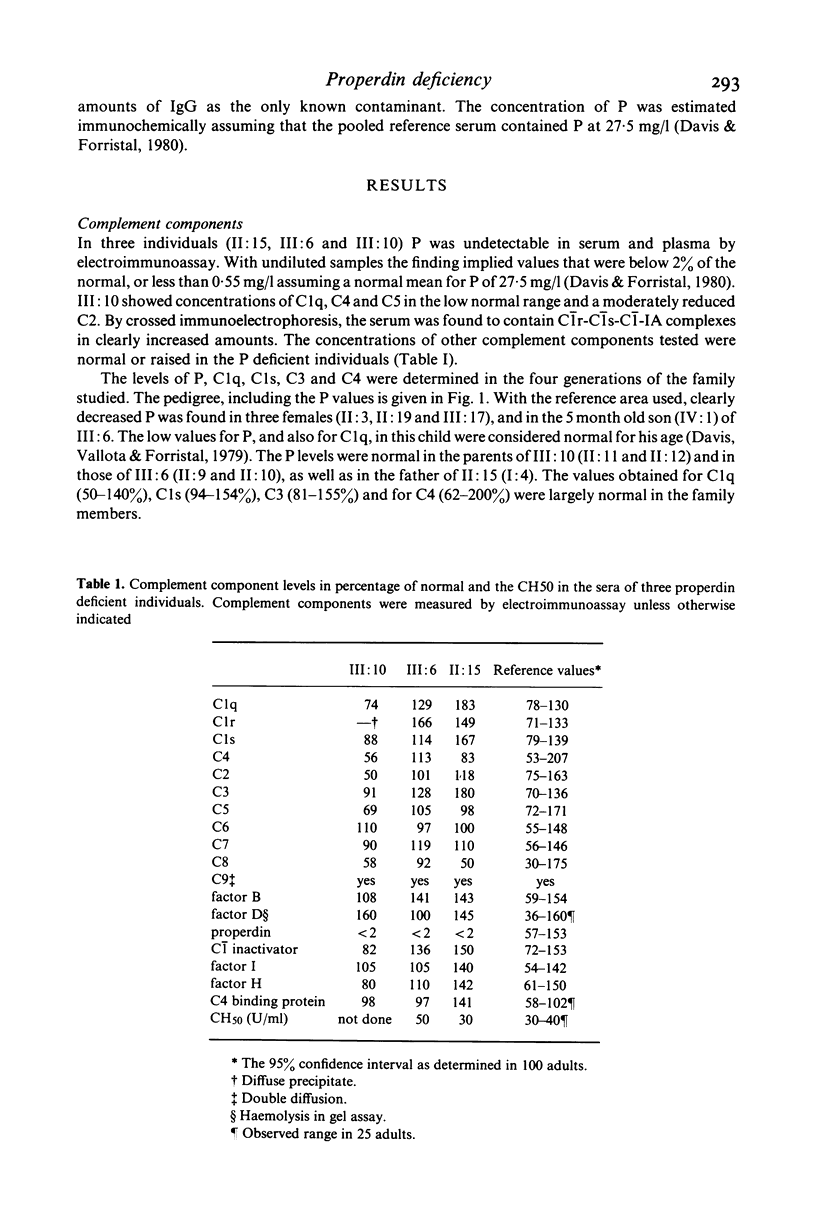
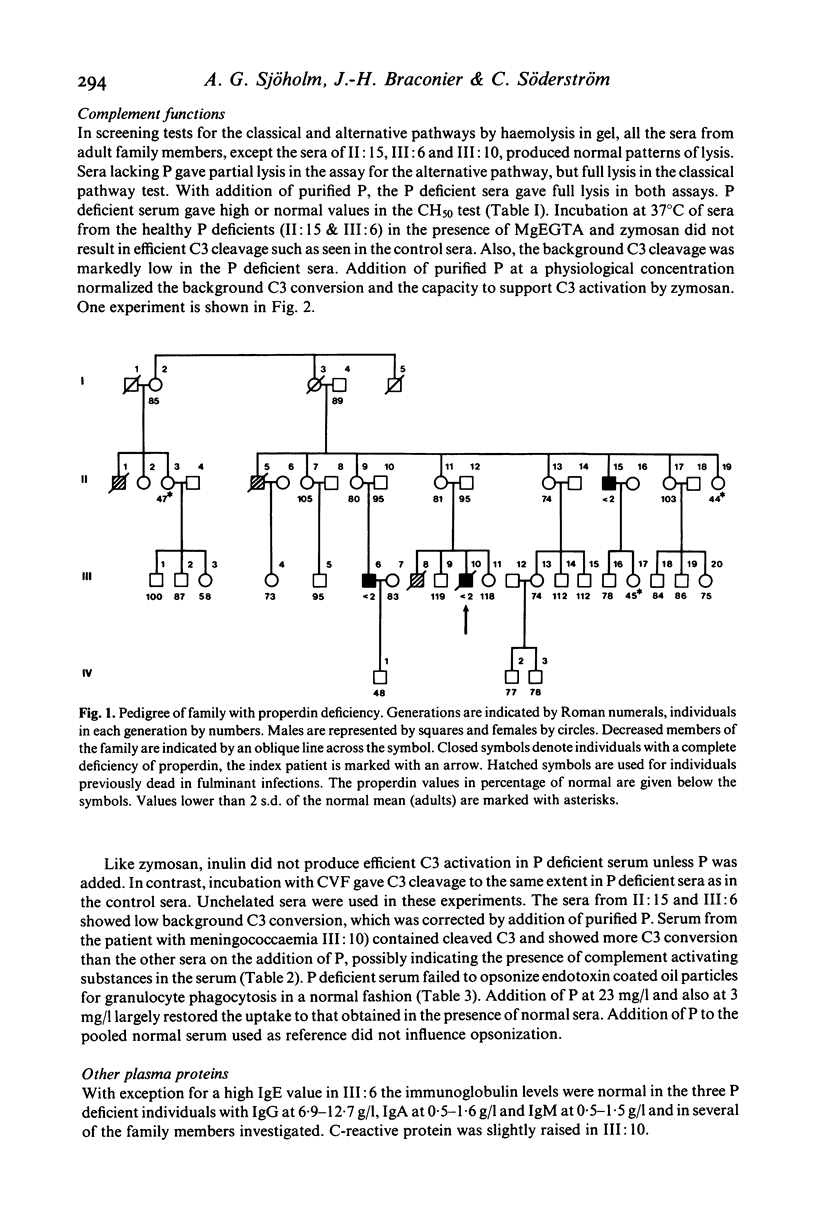

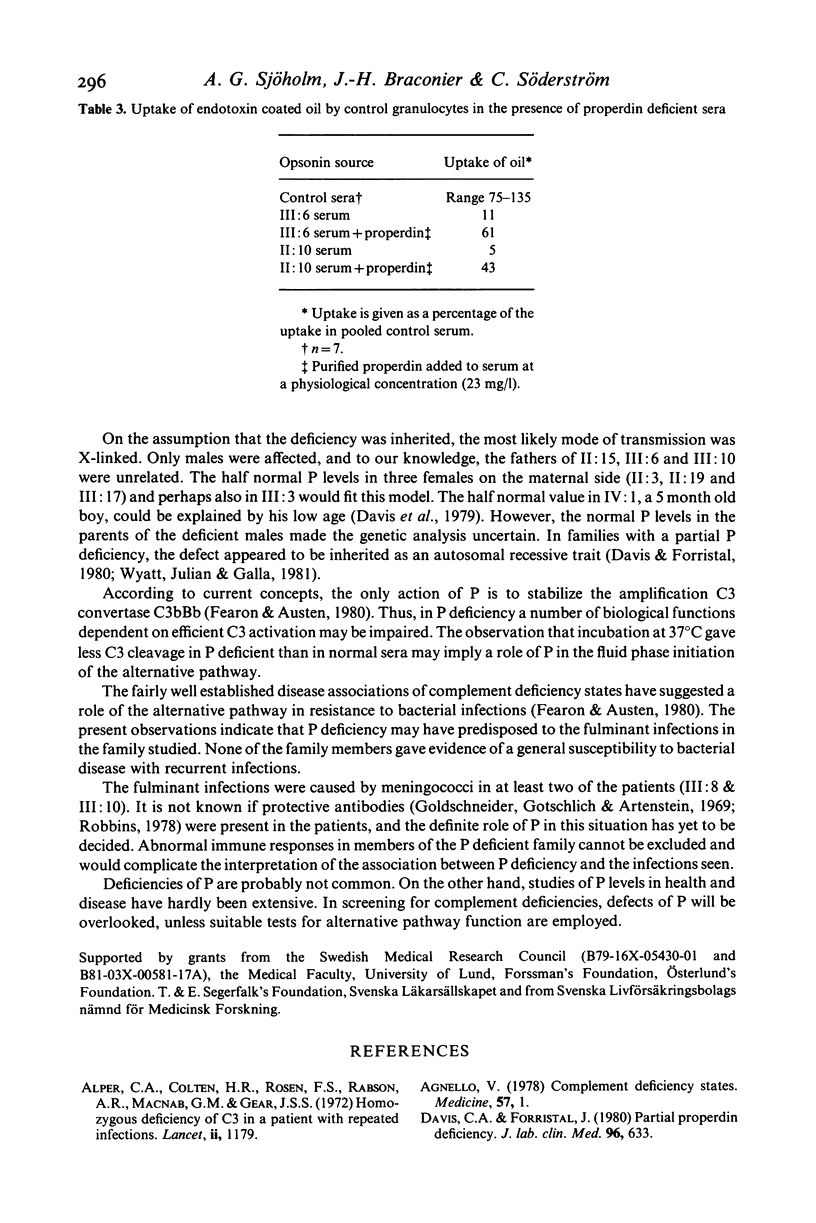
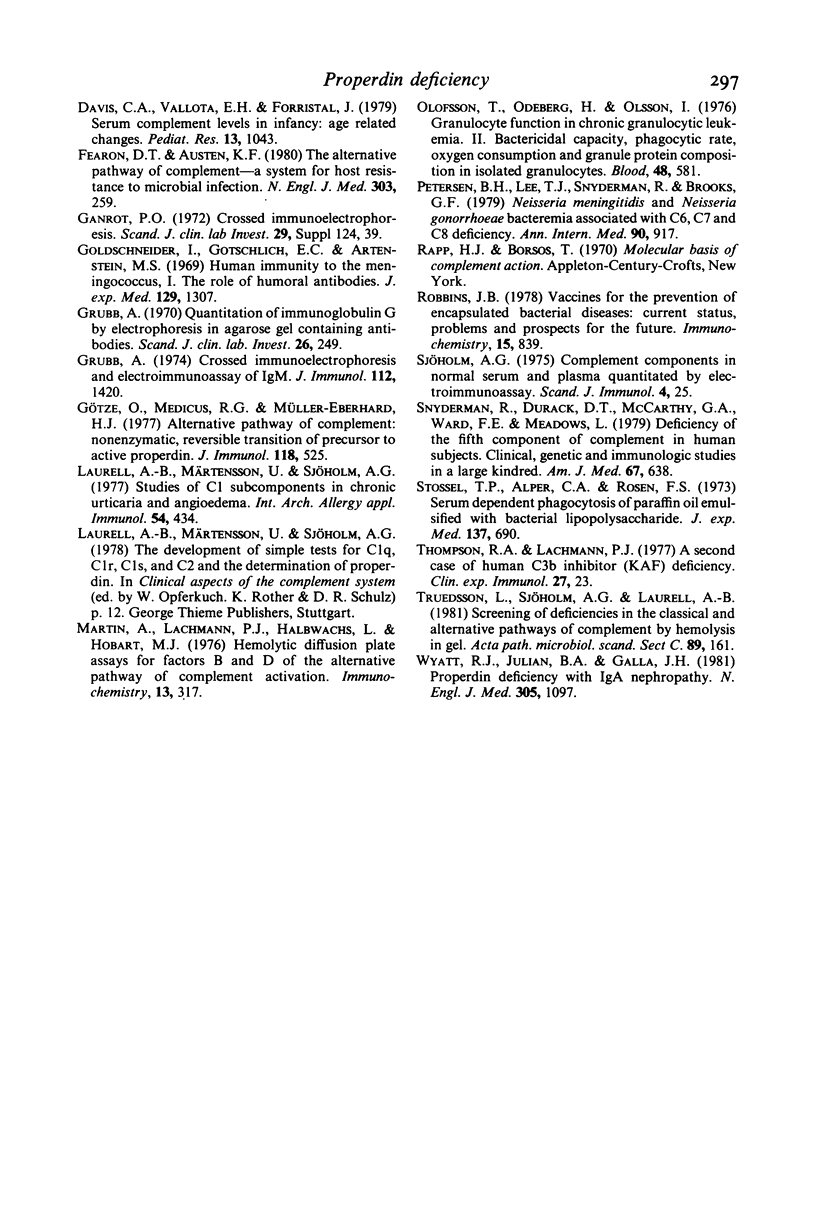
Images in this article
Selected References
These references are in PubMed. This may not be the complete list of references from this article.
- Agnello V. Complement deficiency states. Medicine (Baltimore) 1978 Jan;57(1):1–23. doi: 10.1097/00005792-197801000-00001. [DOI] [PubMed] [Google Scholar]
- Alper C. A., Colten H. R., Rosen F. S., Rabson A. R., Macnab G. M., Gear J. S. Homozygous deficiency of C3 in a patient with repeated infections. Lancet. 1972 Dec 2;2(7788):1179–1181. doi: 10.1016/s0140-6736(72)92598-6. [DOI] [PubMed] [Google Scholar]
- Davis C. A., Forristal J. Partial properdin deficiency. J Lab Clin Med. 1980 Oct;96(4):633–639. [PubMed] [Google Scholar]
- Davis C. A., Vallota E. H., Forristal J. Serum complement levels in infancy: age related changes. Pediatr Res. 1979 Sep;13(9):1043–1046. doi: 10.1203/00006450-197909000-00019. [DOI] [PubMed] [Google Scholar]
- Fearon D. T., Austen K. F. Current concepts in immunology: the alternative pathway of complement--a system for host resistance to microbial infection. N Engl J Med. 1980 Jul 31;303(5):259–263. doi: 10.1056/NEJM198007313030505. [DOI] [PubMed] [Google Scholar]
- Goldschneider I., Gotschlich E. C., Artenstein M. S. Human immunity to the meningococcus. I. The role of humoral antibodies. J Exp Med. 1969 Jun 1;129(6):1307–1326. doi: 10.1084/jem.129.6.1307. [DOI] [PMC free article] [PubMed] [Google Scholar]
- Grubb A. O. Crossed immunoelectrophoresis and electroimmunoassay of IgM. J Immunol. 1974 Apr;112(4):1420–1425. [PubMed] [Google Scholar]
- Grubb A. Quantitation of immunoglobulin G by electrophoresis in agarose gel containing antibodies. Scand J Clin Lab Invest. 1970 Nov;26(3):249–255. doi: 10.3109/00365517009046230. [DOI] [PubMed] [Google Scholar]
- Götze O., Medicus R. G., Müller-Eberhard H. J. Alternative pathway of complement: nonenzymatic, reversible transition of precursor to active properdin. J Immunol. 1977 Feb;118(2):525–532. [PubMed] [Google Scholar]
- Laurell A. B., Mårtensson U., Sjöholm A. G. Studies of C1 subcomponents in chronic urticaria and angioedema. Int Arch Allergy Appl Immunol. 1977;54(5):434–442. doi: 10.1159/000231859. [DOI] [PubMed] [Google Scholar]
- Martin A., Lachmann P. J., Halbwachs L., Hobart M. J. Haemolytic diffusion plate assays for factors B and D of the alternative pathway of complement activation. Immunochemistry. 1976 Apr;13(4):317–324. doi: 10.1016/0019-2791(76)90341-4. [DOI] [PubMed] [Google Scholar]
- Olofsson T., Odeberg H., Olsson I. Granulocyte function in chronic granulocytic leukemia. II. Bactericidal capacity, phagocytic rate, oxygen consumption, and granule protein composition in isolated granulocytes. Blood. 1976 Oct;48(4):581–593. [PubMed] [Google Scholar]
- Petersen B. H., Lee T. J., Snyderman R., Brooks G. F. Neisseria meningitidis and Neisseria gonorrhoeae bacteremia associated with C6, C7, or C8 deficiency. Ann Intern Med. 1979 Jun;90(6):917–920. doi: 10.7326/0003-4819-90-6-917. [DOI] [PubMed] [Google Scholar]
- Robbins J. B. Vaccines for the prevention of encapsulated bacterial diseases: current status, problems and prospects for the future. Immunochemistry. 1978 Nov;15(10-11):839–854. doi: 10.1016/0161-5890(78)90117-7. [DOI] [PubMed] [Google Scholar]
- Sjöholm A. G. Complement components in normal serum and plasma quantitated by electroimmunoassay. Scand J Immunol. 1975;4(1):25–30. doi: 10.1111/j.1365-3083.1975.tb02596.x. [DOI] [PubMed] [Google Scholar]
- Snyderman R., Durack D. T., McCarty G. A., Ward F. E., Meadows L. Deficiency of the fifth component of complement in human subjects. Clinical, genetic and immunologic studies in a large kindred. Am J Med. 1979 Oct;67(4):638–645. doi: 10.1016/0002-9343(79)90247-x. [DOI] [PubMed] [Google Scholar]
- Stossel T. P., Alper C. A., Rosen F. S. Serum-dependent phagocytosis of paraffin oil emulsified with bacterial lipopolysaccharide. J Exp Med. 1973 Mar 1;137(3):690–705. doi: 10.1084/jem.137.3.690. [DOI] [PMC free article] [PubMed] [Google Scholar]
- Thompson R. A., Lachmann P. J. A second case of human C3b inhibitor (KAF) deficiency. Clin Exp Immunol. 1977 Jan;27(1):23–29. [PMC free article] [PubMed] [Google Scholar]
- Truedsson L., Sjöholm A. G., Laurell A. B. Screening for deficiencies in the classical and alternative pathways of complement by hemolysis in gel. Acta Pathol Microbiol Scand C. 1981 Jun;89(3):161–166. doi: 10.1111/j.1699-0463.1981.tb02680.x. [DOI] [PubMed] [Google Scholar]
- Wyatt R. J., Julian B. A., Galla J. H. Properdin deficiency with IgA nephropathy. N Engl J Med. 1981 Oct 29;305(18):1097–1097. doi: 10.1056/NEJM198110293051827. [DOI] [PubMed] [Google Scholar]



